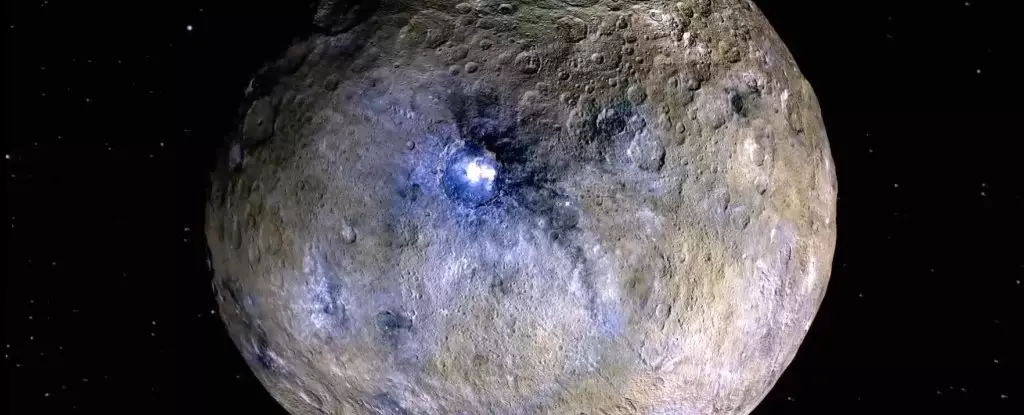Ceres, the largest object in the asteroid belt located between Mars and Jupiter, has long intrigued astronomers and geologists alike. Initially discovered in 1801 and classified as a dwarf planet, Ceres presents an enigma that straddles the line between an asteroid and a frozen ocean world. Recent studies have proposed that this celestial body may contain more than just traces of water ice beneath its seemingly dull and cratered surface. Current scientific analyses suggest that a staggering 90 percent of Ceres’s crust may actually consist of water ice, significantly altering our understanding of its geological and hydrological properties.
Ceres’s unique features, such as its bright spots—which may be the remnants of ice volcanism—and its position as the only dwarf planet located closer to the Sun than Neptune, make it a candidate of great interest. These bright patches hint at geological processes that raise questions about the presence of water and the planet’s potential to serve as a window into the formation of other icy worlds.
Traditionally, scientists believed that if the surface of Ceres harbored significant amounts of water ice, the extensive cratering would not have remained well-defined over billions of years as it presumably would have deformed or smoothed out under such conditions. This thought was substantiated by the assumption that ice, much like glaciers on Earth, would flow under its own weight. However, the findings from NASA’s Dawn spacecraft, which studied Ceres from 2015 onward, presented a challenge to these long-held beliefs.
A team of researchers from Purdue University, led by planetary scientist Ian Pamerleau, analyzed the data collected by Dawn. Their findings suggest that incorporating minimal amounts of rocky material into the ice could significantly enhance its structural integrity, preventing the flowing and deformation of icy surfaces over the geological timescale. This discovery revealed the possibility of a stratified crust with high ice content near the surface, tapering off with depth, thereby allowing the retention of distinct craters over eons.
The implications of Ceres’s potential ice-rich crust are profound, particularly for our understanding of other ocean worlds within the Solar System. Bodies such as Europa, Ganymede, Enceladus, and others are believed to possess subsurface oceans beneath thick ice shells. These moons maintain liquid water due to heating from gravitational interactions with their parent planets. Ceres, however, does not experience such tidal heating, leading scientists to conclude that any primordial ocean it once had has inevitably frozen over, transitioning it into a world of icy remnants.
“Our interpretation of Ceres as an ancient ocean world—albeit a murky and muddy one—opens new avenues for exploring how these celestial bodies evolve over time,” said Mike Sori, a planetary geophysicist at Purdue University. The representation of Ceres as a former ocean world allows scientists to consider a wider array of conditions under which ice-covered environments could form in the universe.
The excitement surrounding Ceres’s potential ice crust has renewed interest in the dwarf planet as a viable target for future exploration. Understanding Ceres’s geological history might offer parallels to the icy moons of the outer Solar System, providing a point of comparison that is much closer to Earth.
As NASA evaluates its next mission targets, Ceres stands out not only as an easily accessible candidate but also as a potentially valuable site for research into the underpinnings of ocean worlds and their different characteristics. Scientists foresee that Ceres could serve as a comparative model, shedding light on the diverse environments of ocean-bearing moons like Europa and Enceladus.
The burgeoning scientific understanding of Ceres as a potential ocean world brings up exciting possibilities for planetology and our perception of icy celestial bodies. The notion that Ceres’s surface might be composed of up to 90 percent water ice challenges previous paradigms and invites further investigation into the dynamics of not only this dwarf planet but also other regions of our solar system. As we continue to explore these distant worlds, Ceres remains a poignant reminder of the compelling mysteries that the universe still holds. Its peculiar characteristics and the possibility of preserving ancient oceans could alter the way we interpret the evolution of icy worlds, both within our solar system and beyond.

